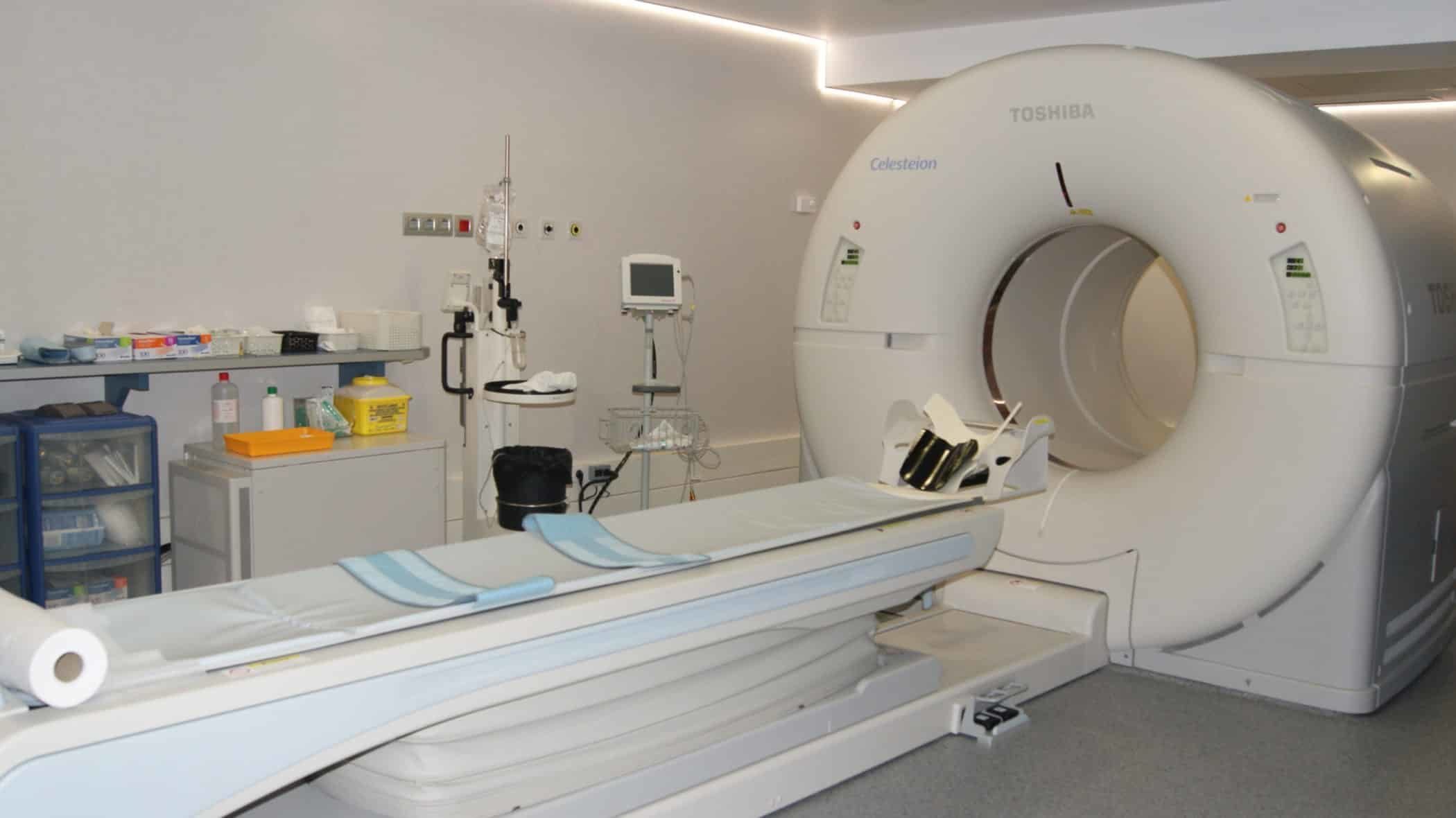PET CT Cranial Amyloid
Indications
The amyloid cranial PET CT scan is used to measure the accumulation of amyloid beta protein in the brain.
In addition, it also makes it possible to detect secondary deterioration associated with a possible neurodegenerative disease such as Alzheimer’s

PET CT Cranial Amyloid
How it is performed?
First the CT is performed and then the PET. The CT allows to obtain images of cuts or sections of the whole body using X-radiation. While the PET allows to evaluate the metabolic activity of the cells present in the organs and tissues of the body by means of the administration of small doses of the radiopharmaceuticals, 18F-Flutemetamol or 18F-Florbetaben, makes it possible to detect brain areas that present a greater accumulation of amyloid plaques. Subsequently, a computer joins the images so that they can be seen in three dimensions and thus have as much information as possible about what they want to study.
Before carrying out the test, we will carry out a glycemia control (blood sugar) and, then, we will proceed to the administration of the intravenous contrast. From this moment on, you must remain at rest for approximately one hour so that the contrast is distributed throughout the body evenly. Subsequently, a radiologist technician will accommodate you on the PET-CT stretcher to perform the test. You should lie face up with your head resting on a cushion. Next, the stretcher will move until the area to be studied is in the center of the PET-CT equipment.

Instructions
How should you prepare?
- Pregnancy: This test is contraindicated during pregnancy. For 24 hours after the test, you should stay away from pregnant women and children, as the radiopharmaceutical administered is radioactive.
- Fasting: You must go to the test with a minimum of 6 hours of fasting and drink approximately one liter of water. Although fasting is required, patients with chronic pathologies (kidney failure, hypertension, diabetes, etc.) can take their usual medication.
- Contrast administration: Before performing the test we will perform a glycemia (blood sugar) control and, then, we will proceed to the administration of intravenous contrast. In general, an analysis performed in the last 3 months is necessary to check that they have correct creatinine levels before the administration of iodinated contrast medium in patients with the possibility of renal failure.
- Breastfeeding: If you are breastfeeding, you should interrupt it for the next 24 hours. You should discard breast milk.
- Hydration: Drink plenty of water to remove contrast or radiopharmaceutical as soon as possible.

Medical professionals
The specialists who will assist you at CreuBlanca
A team of professionals to take care of you.



Related articles
Expert opinion
You will find from the hand of our professionals tips to improve your health and information on the latest technologies applied in the medical health sector.
 75 years CreuBlanca
75 years CreuBlanca
Stories That Bring Us Together: Dr Enric Miret, Specialist Urologist
 The Expert's Voice
The Expert's Voice
Nutrition at Christmas: how to enjoy the festive season without obsessing over weight
 The Expert's Voice
The Expert's Voice
